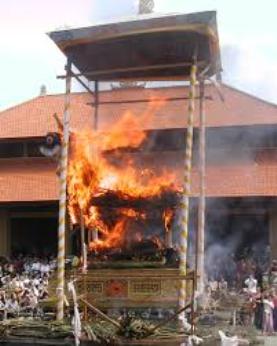
Hindu Funeral Rites
Hindu Funeral rites are also referred as 'Antim Sanskar' (अंतिम संस्कार ). Another popular terminology widely preferred is 'Antyeshti ' (अंत्य + इष्टी =अंत्येष्टी) . 'Antya' (अंत्य) means at the end of & 'Ishtee' (इष्टी) means sacrifice (homam / yadnya). So it means a sacrifice given at the end of one's life (last sacrifice). Extensive texts of such rites are available, particularly in the ‘Garud Puran’. There is a wide inconsistency in theory and practice and the procedures differ from place to place. Further, these rites also differ with caste, sub-caste, social group, etc. and also the status of the deceased person.
History :
In the Indian subcontinent, human bodies were either exposed to the elements of nature, and to the birds, or buried in the earth, in a river, and sometimes kept in a cave or an urn. Centuries later, cremation became the common mode of disposal of the dead bodies, with certain exceptions – the exceptions being bodies of infants, ‘yogis’, ‘sadhus’, etc. Cremation became popular due to the Hindu concept of detachment of soul from the body at the time of death, and the transmigration of the soul from one body to another.
Stages :
Hindu funeral rites may generally be divided into four stages …
- The rituals and rites to be performed when the person is believed to be on the death bed
- Rites which accompany the cremation of the dead body
- Rites which enable the soul of the dead to transit successfully from the stage of a ‘Pret’ to the realm of the ancestors, the ‘Pitar'
- Rites performed in honor of the ‘Pitar’

